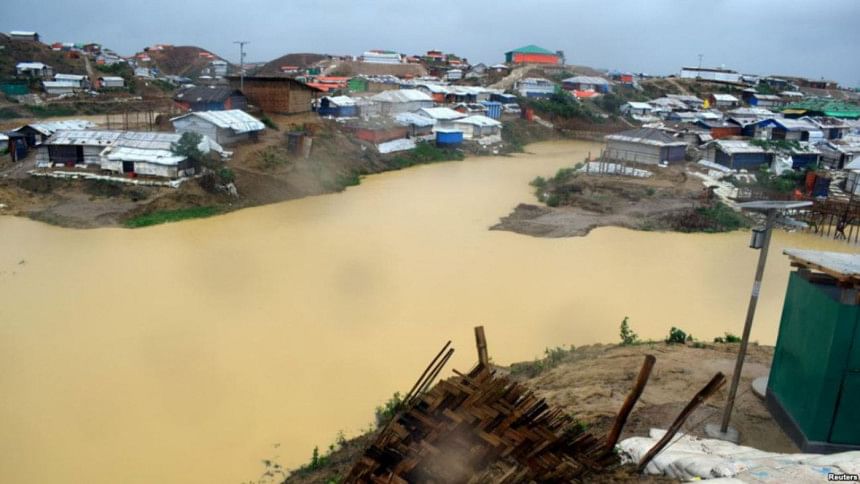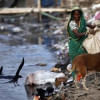A note on the environmental aspects of Rohingya camps

It has been nearly a year since the latest influx of the Rohingya people after they were forcibly driven out of Myanmar and into Bangladesh. Since last August, over 700,000 refugees, mostly women and children, have been housed, fed, clothed and provided with medical attention by a combination of Bangladesh's military and civilian authorities and NGOs as well as the UN and other international agencies, of whom there are over a hundred working day and night in the Rohingya camps.
Over the last year, the problem has been treated as one of emergency humanitarian assistance but now the government and international agencies are beginning to think about the long-term prospects of looking after the Rohingyas in the camps as well as trying to either let them return to Myanmar or perhaps relocate some of them elsewhere.
But there is also the crucial environmental aspect to think about—both inside and outside the camps.
The first point to note is that if we were to look at a satellite image of the region from exactly a year ago, we would see a pristine forest with wild elephants roaming there. A look at the satellite image of the area today shows the world's biggest refugee camp in Kutupalong-Balukhali and the fourth largest city in Bangladesh struggling with the overflow of refugees, living in makeshift shelters perched on the hills.
The immediate environmental hazard inside the camps is the possibility of landslides due to heavy rains during the monsoon which has already started. Fortunately, Bangladesh government and the international agencies have been working tirelessly to prevent the worst disasters by relocating the most vulnerable households, building drains to allow rainwater to flow without damaging the shelters, reinforcing the paths so they don't wash away, strengthening the shelters to withstand high winds and, most importantly, training the people in emergency management. So far, these measures have prevented any major catastrophe but the worst is not over yet.
The second environmental issue within the camps is managing waste, both human and plastic and other types. So far, there have been a number of units of faecal sludge management for communal toilets installed, but more will be needed. Also, better general waste management needs to be ensured.
A third element inside the camps remains water and sanitation, which has been given priority since the beginning and has been managed reasonably well.
A fourth and final environmental hazard inside the camps is indoor air pollution as well as fire hazards from cooking inside the shelters. These are being dealt with through a shift towards communal cooking and by raising awareness of fire hazards.
The environmental challenges are not only inside the camps but also outside them as well. The continued dependence on fuelwood for cooking is leading to continued cutting of trees outside the camps, leading not only to loss of forests but also loss of biodiversity. This will need to be addressed by providing alternative fuel for cooking.
Initially, there had been a number of deaths due to trampling by wild elephants passing through their traditional trails where shelters had been placed unknowingly. These have now been mitigated by actions by the IUCN and local people ensuring that the elephants take alternative routes.
Finally, the authorities have decided to set up a regular environmental monitoring programme both inside and outside the camps in order to collect data on a regular basis and provide monthly environmental status reports to the authorities. The monitoring programme will be developed and run by Bangladeshi experts from universities, research institutions and government agencies who will provide regular updates on the environmental issues, with recommendations for mitigating the worst problems.
While it may be impossible to avoid some level of environmental degradation, it should be possible to minimise it by regular monitoring and taking preventive actions where needed.
Saleemul Huq is Director, International Centre for Climate Change and Development at the Independent University, Bangladesh. Email: [email protected]










Comments